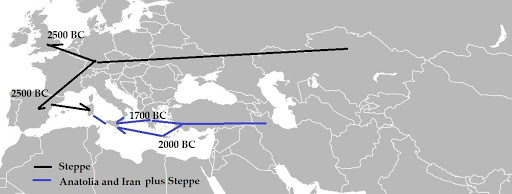Regio X
Regular Member
- Messages
- 1,109
- Reaction score
- 480
- Points
- 0
@All
In my previous post, I considered ENA as ANE-like, and summed both. Those ANE-like in CHG/Iran could still be divided into ANE proper and ENA. The 30.3 in CHG would be something as 22.2 ANE and 8.1 ENA. The 32.7 in Iran Neo, 21.8 ANE and 10.9 ENA.
Anatolia Neo also could be modeled with ENA (2.4%, plus 97.6 Dzudzuana), but that's perhaps 'cause it had already a bit of CHG/Iran-related ancestry. Possibly AHG would lack these traces of ENA.
In my previous post, I considered ENA as ANE-like, and summed both. Those ANE-like in CHG/Iran could still be divided into ANE proper and ENA. The 30.3 in CHG would be something as 22.2 ANE and 8.1 ENA. The 32.7 in Iran Neo, 21.8 ANE and 10.9 ENA.
Anatolia Neo also could be modeled with ENA (2.4%, plus 97.6 Dzudzuana), but that's perhaps 'cause it had already a bit of CHG/Iran-related ancestry. Possibly AHG would lack these traces of ENA.






